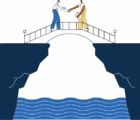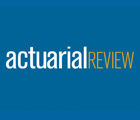 As we all know quite well, the CAS is an actuarial organization with a focus on certain areas of risk and insurance; consequently, that focus gives us some unique views when we speak to other actuaries. Yes, there are other actuarial organizations that specialize, such as consulting actuaries and actuaries whose focus is on pensions, retirement and health and welfare benefit programs. But the education of most actuaries around the world is built around fundamentals of actuarial science and at least some core knowledge in all or most areas of common actuarial practice.
As we all know quite well, the CAS is an actuarial organization with a focus on certain areas of risk and insurance; consequently, that focus gives us some unique views when we speak to other actuaries. Yes, there are other actuarial organizations that specialize, such as consulting actuaries and actuaries whose focus is on pensions, retirement and health and welfare benefit programs. But the education of most actuaries around the world is built around fundamentals of actuarial science and at least some core knowledge in all or most areas of common actuarial practice.
At a CAS Board meeting last August, Board Member Jessica Leong posed a strategic question: “Why does the CAS exist?” This question was quite apropos as the board had just heard the review of the previous year’s accomplishments under the CAS Strategic Plan. Leong told the board about the author Simon Sinek’s TED Talk, “Start with Why.” His TED Talk video and book of the same name, as well as his website (www.startwithwhy.com), provide some useful insights for facing both personal and organizational challenges. Sinek observes how successful organizations communicate and sell themselves. Sinek believes that many organizations communicate in questions in the following order: What? How? Why? Sinek says that such order of these questions is the exact opposite of how the most successful organizations communicate: Why? How? What?
Sinek applies his observations about the order of these questions to Apple:
Why? —Apple believes in challenging the status quo and believes in thinking differently. This message defines the organization and its mission in the world.
How? — Apple makes beautiful products. This is how the organization distinguishes itself.
What? — Apple sells computers. This describes what the organization does.
Why do we believe that it is better for actuaries to be qualified in the casualty field (non-life, property/casualty or general insurance) by the CAS rather than an actuarial organization that broadly qualifies actuaries across all areas of specialization?
The preamble to CAS Mission Statement reflects the what of the CAS:
The CAS focuses on supporting casualty actuaries who are committed to achieving their full professional potential while maintaining the highest standards of conduct and competence.
And the how of the CAS is implicitly reflected in the Definition of a Casualty Actuary:
A casualty actuary is a professional skilled in the analysis, evaluation and management of the financial implications of future contingent events primarily with respect to general insurance, including property, casualty, and similar risk exposures. A casualty actuary has practical knowledge of how these various risks interact with each other and the environment in which these risks occur.
The CAS Mission Statement and CAS Vision Statement further support the why of the CAS.
The purposes of the Casualty Actuarial Society are:
- To advance the body of knowledge of actuarial science applied to general insurance, including property, casualty and similar risk exposures.
- To expand the application of actuarial science to enterprise risks and systemic risks.
- To establish and maintain standards of qualification for membership.
- To promote and maintain high standards of conduct and competence.
- To increase the awareness of actuarial science.
- To contribute to the well-being of society as a whole.
Actuaries are recognized for their authoritative advice and valued comment wherever there is financial risk and uncertainty.
The takeaway from Sinek’s Ted Talk, however, is that the why should be more explicit and attempt to best express the beliefs and inspirations for the CAS in society — why does the CAS do what it does? For example, why do we believe that it is better for actuaries to be qualified in the casualty field (non-life, property/casualty or general insurance) by the CAS rather than an actuarial organization that broadly qualifies actuaries across all areas of specialization?
Our why might be stated as “To provide society with the quantitative analyses needed to manage the financial consequences resulting from property/casualty risks.”
Said in terms of what we believe, it may be stated as, “We believe that CAS actuaries can provide society with the quantitative analyses needed to manage the uncertain financial consequences from property/casualty risks.”
This sounds very consistent with the mission, vision and purposes of the CAS, but the question remains: Why should there be a separate actuarial organization for just P&C risks? Sinek describes finding your why in terms of beliefs — your community is defined by shared beliefs, and those who share your beliefs are drawn to you and your community. Over 100 years ago, the actuarial community was intently focused on mortality risk. It is certainly understandable that the characteristics associated with human mortality were of great interest to society for hundreds of years as they are today. However, the quantitative analysis of mortality risks is quite distinct from the quantitative analysis of property/casualty risks. The development of the life insurance industry and various social security and retirement income programs has been focused on the financial consequences of the risks of mortality and longevity of individuals. For property/casualty risks, the risk characteristics of concern are quite different.
So why should the CAS exist? Because the CAS is a community defined by the shared beliefs of actuaries whose specialty is solving actuarial problems in property/casualty risks, and those actuaries who share our beliefs are drawn to the CAS and our community.
So having a separate actuarial organization that focuses on property/casualty risks would seem to be a very natural community. There are parallels in the specialization of other professions, such as medicine, engineering and the physical sciences. The closest example of such specializations in the insurance field is with other insurance professionals, such as underwriters. The underwriting profession in the U.S. has a long history of professional training and credentialing from separate organizations — the Chartered Property/Casualty Underwriters Society and the American Society of Chartered Life Underwriters. Each of those two organizations has flourished in their specialized areas of insurance underwriting and has expanded their training to other related types of professionals. The common driver has been the needs of the insurance industry and the community of professionals that defines itself based on those needs.
So the suggestion to merge actuarial organizations or that one actuarial organization would provide a better way to meet the needs of the actuarial profession seems to ignore the need for specialization. More importantly, a professional community defines itself based on shared beliefs and the common problems and solutions that those professionals are most interested in. The CAS has long established itself as meeting the needs of the insurance industry that has also specialized in property/casualty risks, either by choice or by laws and regulations that apply to those insurance companies.
The CAS is the third largest actuarial organization in the world that provides its own actuarial credentials by examination. So the idea that specialization can be better served by a property/casualty section within one actuarial organization not only ignores the needs of the industry that CAS members have served for many years, but also ignores the incredibly strong, vibrant and durable community of actuaries that the CAS has become.
So why should the CAS exist? Because the CAS is a community defined by the shared beliefs of actuaries whose specialty is solving actuarial problems in property/casualty risks, and those actuaries who share our beliefs are drawn to the CAS and our community. Those shared beliefs are what define our community within the actuarial profession and thereby define why the CAS should exist.
Please share your reactions, ideas and suggestions by leaving a comment on the CAS Roundtable Blog, where this column has been posted.











